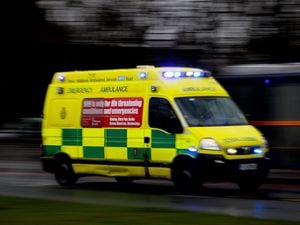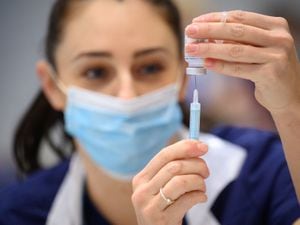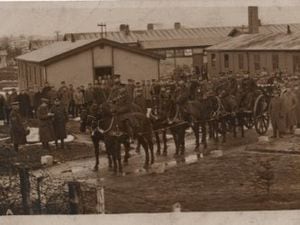Action being taken to tackle delays in patient handovers at region's A&Es, ambulance bosses say
Health services in the region are working together in an effort to reduce handover delays at A&E departments, ambulance bosses have said.

Large numbers of patients waiting in A&E units means that new patients arriving by ambulance frequently cannot be admitted until a doctor is available.
It can mean paramedics often wait with sick patients in the back of their vehicles until they can be admitted.
In December, West Midlands Ambulance Service (WMAS) lost 2,000 hours a day across the region as its crews waited with patients to be admitted to hospitals.
Paramedics speaking in an Express & Star investigation this week reported spending their entire shift in a hospital car park before being relieved by another crew, as emergency departments report high levels of demand.
But WMAS said it is now taking less than 50 per cent of patients to A&E and promised measures were being taken to try and alleviate the problems.
Bosses have emphasised that it is a "whole system issue", and ambulance, hospital and social care services were all working together.
“Sadly, we are seeing some patients wait a very long time for ambulances to arrive as a result of long hospital handover delays," a spokeswoman for the ambulance service said.
"The pressures we are seeing in health and social care means that when our crews arrive at A&E they are unable to handover patients to hospital staff and therefore cannot respond to the next patient in the community.
“If there are long hospital handover delays, with our crews left caring for patients that need admitting to hospital, they are simply unable to responding to the next call, which can impact on the care of the patient in the community.
“We are working incredibly hard with our partners to find new ways to reduce these delays, so that our crews can respond more quickly and save more lives.”
Bosses say a clinical validation team, made up of advanced paramedics and nurses, are helping WMAS target its resources on those who need it most by assisting more patients over the phone or transferring patients to other parts of the NHS.
This could be to occupational therapy, advanced nurse practitioners in the community, district nurses or referring patients to same day emergency care services.
The trust says schemes such as the ambulance decision area at University Hospitals of Birmingham (UHB) and Shrewsbury, and soon Worcester, are already making a difference.
Delays at UHB are half what they used to be, bosses said.
Advanced paramedics are also working with ambulance healthcare assistants to look after patients within dedicated areas of the hospital to free up crews.
They have additional skills which allow them to start tests that the patient needs ahead of them entering emergency departments.
NHS targets state trusts should complete 95 per cent of all ambulance handovers in 30 minutes, with all conducted in less than one hour.
A handover delay does not always mean a patient has waited in the ambulance as they could have been moved into an A&E department but the handover was not completed.
The ability of ambulance crews to get to emergencies has seen a huge drop in the last year and a half.
With crews frequently tied up waiting at hospitals, ambulances are simply not free to respond to fresh emergencies.
Response times for category two calls – strokes, heart attacks, and other serious illnesses, were an hour and 30 minutes in December – five times longer than the government target of 18 minutes. The sheer level of decline is illustrated when compared to the December 2021 response time, which was 14 minutes and 46 seconds.
The public have also been urged to play their part to support the NHS this winter by coming forward for their flu and Covid vaccines and using services like NHS 111 online for non-urgent advice, and 999 in emergencies.





